- Scag Lawn Mower Service Tools & Equipment
- Service Table for Scag Lawn Mower Won’t Start
- How to Check the Battery
- How to Inspect the Spark Plug
- How to Check the Fuel Filter
- How to Check the Air Filter
- How to Inspect the Ignition System
- How to Test the Carburetor
- How to Test the Safety Switch
- How to Check the Engine Oil Level
- Scag Lawn Mower Won’t Start FAQ
However, even the best machines can face occasional issues, and one of the most frustrating problems is when your Scag lawn mower won’t start. Whether you own a walk-behind mower or a zero-turn rider, a non-starting lawn mower can put a pause on your landscaping plans. But worry not, as we are here to help! In this guide, we will provide you with expert troubleshooting solutions to diagnose the reasons behind your Scag lawn mower’s refusal to start.
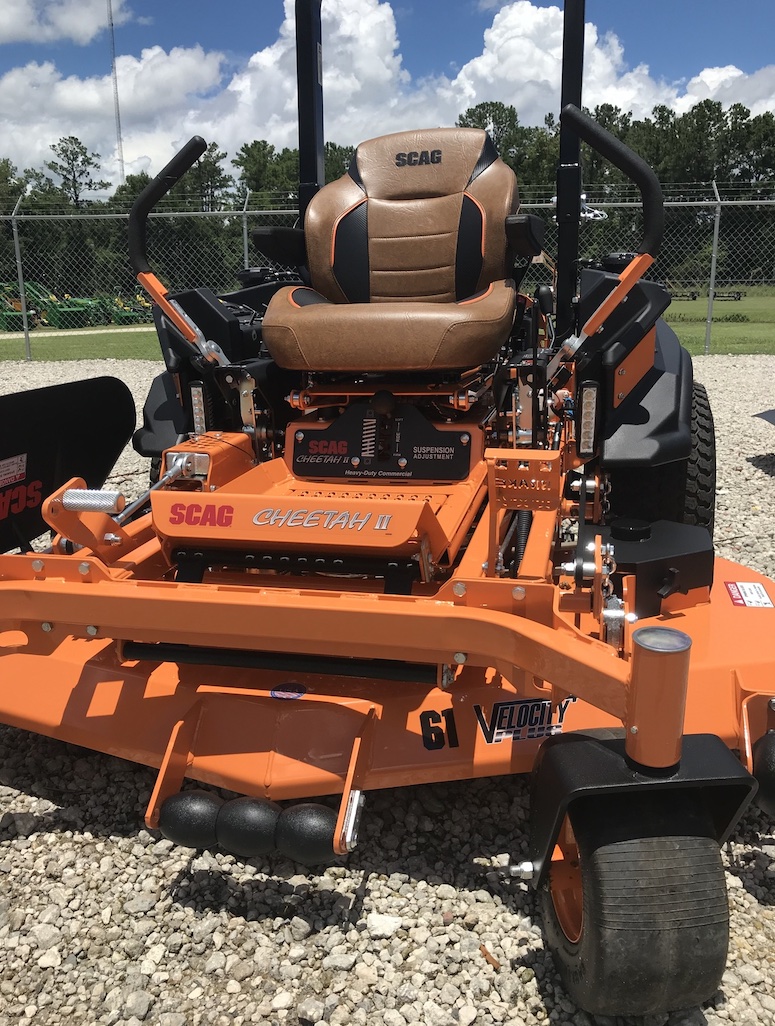
From checking the battery and fuel system to inspecting the ignition and safety switches, we’ll cover all the necessary steps to get your Scag mower up and running again. Let’s dive in and bring the life back to your lawn care routine!
Scag Lawn Mower Service Tools & Equipment
Troubleshooting a Scag Lawn Mower that won’t start may require the following tools and equipment:
- Multimeter: To test electrical circuits, battery voltage, and continuity.
- Socket and wrench set: For removing and tightening bolts and nuts.
- Screwdrivers (Flathead and Phillips): For various tasks like removing covers and components.
- Spark plug socket and gap tool: For removing and inspecting the spark plug.
- Fuel pressure gauge: To check the fuel system’s pressure.
- Fuel line clamp: To prevent fuel flow while working on the fuel system.
- Compression tester: To check the engine compression.
- Oil dipstick: To check the engine oil level.
- Clean rags and cleaning solvent: For cleaning components and surfaces.
- Safety goggles and gloves: To protect your eyes and hands.
- Spark plug cleaner or replacement: For cleaning or replacing the spark plug.
- Fuel filter: For replacement if needed.
- Air filter: For cleaning or replacement if required.
- Carburetor cleaner: To clean the carburetor if it’s clogged.
- Fuel container: To drain and refill the fuel if necessary.
- Shop manual or user manual: For reference and guidance on specific procedures.
Remember to prioritize safety while troubleshooting, and if you’re unsure about any task, it’s best to consult a professional or a qualified technician. Additionally, always disconnect the spark plug wire before performing any maintenance or repairs on the lawn mower
Service Table for Scag Lawn Mower Won’t Start
This service table is a comprehensive guide for troubleshooting common issues with a Scag lawn mower that won’t start. However, it is essential to exercise caution and consider seeking professional help if you encounter more complex problems or are unsure about any repair procedures.
| Issue | Possible Causes | Troubleshooting Steps |
|---|---|---|
| Engine Doesn’t Crank | Dead Battery | 1. Check battery voltage with a multimeter. If low, recharge or replace the battery. |
| Loose or corroded battery connections | 2. Inspect battery terminals and cables. Clean or tighten as needed. | |
| Faulty starter motor or solenoid | 3. Test the starter motor and solenoid with a multimeter. Replace if defective. | |
| Safety switch issues | 4. Verify all safety switches (seat, clutch, brake) are functioning correctly. | |
| Ignition switch failure | 5. Check the ignition switch for continuity using a multimeter. Replace if necessary. | |
| Engine Cranks but Doesn’t Start | Lack of fuel | 1. Check fuel tank level. Refill if necessary. |
| Clogged fuel filter | 2. Examine the fuel filter and replace if dirty or clogged. | |
| Fuel line blockage | 3. Inspect the fuel lines for any obstructions. Clear if necessary. | |
| Water in fuel | 4. Drain the fuel tank and refill with fresh fuel. | |
| Faulty spark plug | 5. Remove the spark plug and inspect its condition. Clean or replace if necessary. | |
| Insufficient oil | 6. Check engine oil level using the dipstick. Add oil if needed. | |
| Dirty or faulty air filter | 7. Remove the air filter and clean or replace it. | |
| Carburetor issues | 8. Test the carburetor for proper functioning. Clean or rebuild if necessary. | |
| Engine Starts but Shuts Off Immediately | Safety switch problems | 1. Verify all safety switches (seat, clutch, brake) are working correctly. |
| Clogged fuel filter | 2. Check the fuel filter and replace if obstructed. | |
| Carburetor issues | 3. Test and clean the carburetor. Replace any damaged parts. | |
| Fuel line blockage | 4. Inspect fuel lines for blockages or kinks. Clear if needed. | |
| Engine Runs Rough or Stalls Under Load | Dirty air filter | 1. Clean or replace the air filter. |
| Faulty spark plug | 2. Check spark plug condition and replace if necessary. | |
| Carburetor adjustment | 3. Adjust the carburetor settings for optimal performance. | |
| Low engine oil | 4. Check engine oil level and top up if low. | |
| Clogged fuel filter | 5. Examine the fuel filter and replace if required. | |
| Water or debris in the fuel system | 6. Drain the fuel tank and refill with clean, fresh fuel. | |
| Ignition system issues | 7. Inspect the ignition components and replace any faulty parts. | |
| Excessive Vibration or Unusual Noises | Loose or damaged blade | 1. Examine the lawn mower blades for damage and tighten if necessary. |
| Bent or unbalanced blade | 2. Check blade balance and alignment. Balance or replace if needed. | |
| Worn or damaged belts | 3. Inspect the drive belts for wear and replace if necessary. | |
| Loose engine components | 4. Tighten all engine bolts and components. | |
| Damaged pulleys or bearings | 5. Check pulleys and bearings for damage. Replace as needed. |
Note: Always follow safety guidelines and refer to your lawn mower’s user manual for specific instructions and part numbers.
How to Check the Battery
Ensure the ignition key is in the “off” position and remove it from the mower to prevent accidental starts. To check the battery of your Scag Lawn Mower if it won’t start, follow these step-by-step instructions:
- Locate the Battery: The battery is usually located under the hood or near the engine. Refer to the mower’s user manual for specific instructions on locating the battery.
- Inspect the Battery Terminals: Check the battery terminals for any signs of corrosion, rust, or loose connections. Corroded terminals can hinder the flow of electricity.
- Clean the Battery Terminals: If you notice corrosion, use a wire brush or battery terminal cleaner to clean the terminals thoroughly. Make sure to disconnect the battery cables before cleaning.
- Check the Battery Voltage: Use a multimeter set to DC voltage mode. Connect the positive (red) lead to the positive terminal of the battery and the negative (black) lead to the negative terminal.
- Read the Voltage: A fully charged 12-volt battery should read around 12.6 volts. If the reading is significantly lower, the battery may need recharging or replacement.
- Recharge the Battery (if needed): If the voltage is low, recharge the battery using an appropriate battery charger. Follow the charger’s instructions and safety guidelines.
- Load Test the Battery (Optional): If you have access to a load tester, perform a load test to check the battery’s capacity. A weak battery may need replacement.
- Reconnect the Battery: After cleaning and charging the battery, reconnect the battery cables securely. Ensure the positive cable goes to the positive terminal and the negative cable to the negative terminal.
- Check Other Electrical Connections: Inspect other electrical connections, such as the starter solenoid, ignition switch, and safety switches. Make sure they are clean and secure.
- Retest Starting: Attempt to start the lawn mower and observe if the engine cranks. If it still doesn’t start, consider other possible causes, such as fuel issues or ignition system problems.
If the battery is in good condition and the mower still won’t start, it may be necessary to troubleshoot other components or seek assistance from a qualified technician. Always prioritize safety and follow proper procedures while working on the mower.
How to Inspect the Spark Plug
To inspect the spark plug of your Scag Lawn Mower if it won’t start, follow these step-by-step instructions:
- Locate the Spark Plug: The spark plug is typically located on the engine’s cylinder head. Refer to the mower’s user manual for specific instructions on locating the spark plug.
- Clean the Area: Use a clean cloth or compressed air to remove any dirt or debris around the spark plug. This prevents contaminants from falling into the combustion chamber when the plug is removed.
- Inspect the Spark Plug Condition: Examine the spark plug’s appearance. Look for signs of wear, fouling, or damage. The electrodes should be clean and have a light brownish color.
- Check the Spark Plug Gap: Use a spark plug gap tool to check the gap between the electrodes. The correct gap value is specified in the mower’s user manual. Adjust the gap using the tool if necessary.
- Clean the Spark Plug (if needed): If the spark plug electrodes are dirty or covered in carbon deposits, use a wire brush or a spark plug cleaner to clean them. Avoid damaging the electrodes.
- Inspect the Ceramic Insulator: Check the ceramic insulator for cracks or chips. A damaged insulator can lead to misfiring and poor engine performance.
- Replace the Spark Plug (if necessary): If the spark plug is worn, fouled, or damaged beyond cleaning, it’s best to replace it with a new one. Use the recommended spark plug type and heat range for your mower’s engine.
- Install the Spark Plug: Carefully thread the spark plug back into the cylinder head by hand. Once it’s snug, use a spark plug wrench to tighten it securely. Be careful not to overtighten to avoid damaging the threads.
- Reconnect the Spark Plug Wire: Make sure the spark plug wire is securely connected to the spark plug. It should fit tightly and click into place.
- Retest Starting: Attempt to start the lawn mower and observe if the engine cranks. A properly functioning spark plug should ignite the fuel-air mixture and allow the engine to start.
If the spark plug is in good condition and the mower still won’t start, consider other possible causes, such as fuel issues, ignition system problems, or carburetor issues. If you are unsure or uncomfortable performing these inspections, seek assistance from a qualified technician.
How to Check the Fuel Filter
To examine the fuel filter of your Scag Lawn Mower if it won’t start, follow these step-by-step instructions:
- Locate the Fuel Filter: The fuel filter is typically located between the fuel tank and the carburetor. Refer to the mower’s user manual for specific instructions on locating the fuel filter.
- Inspect the Fuel Lines: Before examining the fuel filter, visually inspect the fuel lines for any signs of damage, cracks, or leaks. Damaged fuel lines can cause fuel flow issues and prevent the engine from starting.
- Prepare a Catch Basin: Place a small catch basin or a clean rag under the fuel filter to catch any spilled fuel during the inspection.
- Remove the Fuel Filter: Depending on the type of fuel filter, you may need to use a fuel line clamp or needle-nose pliers to pinch the fuel line and prevent fuel from spilling when removing the filter. Unscrew the fuel filter counterclockwise to remove it from the fuel line.
- Examine the Fuel Filter: Check the fuel filter for any signs of clogging, debris, or discoloration. A clogged or dirty fuel filter can restrict fuel flow to the engine and cause starting problems.
- Replace the Fuel Filter (if necessary): If the fuel filter appears dirty, clogged, or damaged, it’s best to replace it with a new one. Purchase a replacement fuel filter that matches the model and specifications recommended for your Scag Lawn Mower.
- Install the New Fuel Filter: Apply a small amount of clean engine oil to the threads of the new fuel filter to ensure a proper seal. Hand-tighten the new fuel filter onto the fuel line, and then use a wrench to give it a final snug turn.
- Reconnect the Fuel Lines: If you had to pinch the fuel line, release it carefully to allow the fuel to flow. Ensure that the fuel lines are securely connected to the fuel filter and fuel tank.
- Clean Up and Safety Check: Wipe away any spilled fuel and ensure there are no leaks around the fuel filter connections. Confirm that all safety features, such as the seat switch or parking brake, are engaged as required for starting the mower.
- Retest Starting: Attempt to start the lawn mower and observe if the engine cranks. A properly functioning fuel filter allows fuel to flow freely to the engine, aiding in successful starting.
If examining the fuel filter doesn’t resolve the issue and the mower still won’t start, consider other potential causes, such as spark plug problems, ignition system issues, or carburetor troubles. If you are unsure or uncomfortable performing these inspections, seek assistance from a qualified technician.
How to Check the Air Filter
To check the air filter of your Scag Lawn Mower if it won’t start, follow these step-by-step instructions:
- Safety First: Ensure the ignition key is in the “off” position and remove it from the mower to prevent accidental starts. Allow the engine to cool down before proceeding.
- Locate the Air Filter Housing: The air filter housing is usually located on the side or top of the engine. Refer to the mower’s user manual for specific instructions on locating the air filter.
- Open the Air Filter Housing: Depending on the model, you may need to use a screwdriver, wing nut, or release latch to open the air filter housing cover. Gently remove the cover to access the air filter.
- Inspect the Air Filter Element: Carefully remove the air filter element from the housing. Inspect the filter for dirt, debris, and damage. A clogged or dirty air filter can restrict airflow to the engine and cause starting issues.
- Clean or Replace the Air Filter (if necessary): If the air filter is dirty or clogged, you have two options: cleaning or replacement. If it’s a foam or fabric filter, you can clean it using warm, soapy water. Rinse it thoroughly and allow it to air dry. For paper or disposable filters, they should be replaced with a new one.
- Inspect the Air Filter Housing: While the air filter is removed, check the air filter housing and surrounding area for any debris or contaminants. Clean the housing if necessary to ensure a proper seal for the new or cleaned filter.
- Install the Air Filter Element: Once the air filter element is clean and dry (or you have a new one), place it back into the air filter housing. Ensure it fits snugly and securely without any gaps around the edges.
- Close the Air Filter Housing: Carefully place the air filter housing cover back into position and secure it with the screws, wing nuts, or latch.
- Clean Up and Safety Check: Wipe away any debris or dirt that may have fallen during the inspection. Double-check that all safety features, such as the seat switch or parking brake, are engaged as required for starting the mower.
- Retest Starting: Attempt to start the lawn mower and observe if the engine cranks. A clean and properly installed air filter allows sufficient airflow to the engine, which is essential for starting and running smoothly.
If examining the air filter doesn’t resolve the issue and the mower still won’t start, consider other potential causes, such as fuel-related problems, spark plug issues, or ignition system malfunctions.
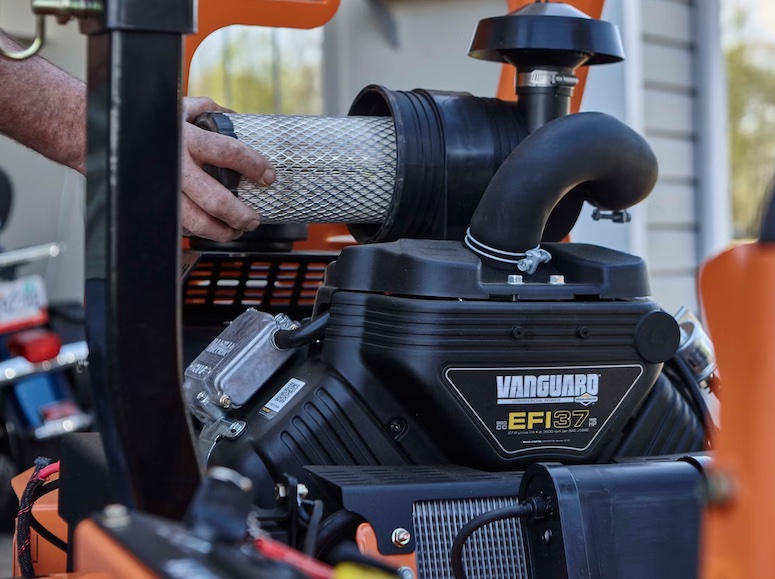
If you are unsure or uncomfortable performing these inspections, seek assistance from a qualified technician.
How to Inspect the Ignition System
To inspect the ignition system of your Scag Lawn Mower if it won’t start, follow these step-by-step instructions:
- Locate the Ignition System Components: The key components of the ignition system include the spark plug, ignition coil, spark plug wire, and magneto (if applicable). Refer to the mower’s user manual to identify the specific location of these components.
- Check the Spark Plug: Start by inspecting the spark plug. Disconnect the spark plug wire from the spark plug and use a spark plug socket wrench to carefully remove the spark plug from the engine. Check the spark plug for signs of fouling, such as black deposits or excessive wear. A fouled or damaged spark plug can prevent the engine from starting.
- Clean or Replace the Spark Plug (if necessary): If the spark plug appears dirty, clean it using a wire brush and a bit of gasoline. If the spark plug is damaged, corroded, or worn out, replace it with a new one recommended by the manufacturer. Ensure the spark plug is properly gapped according to the manufacturer’s specifications.
- Inspect the Spark Plug Wire: Examine the spark plug wire for any signs of damage, such as cracks, fraying, or burn marks. Damaged spark plug wires can lead to weak or no spark, causing starting issues.
- Check the Ignition Coil: The ignition coil is responsible for generating the high voltage needed to produce a spark at the spark plug. Ensure the ignition coil is securely attached to the engine and that all wires and connections are in good condition.
- Check the Magneto (if applicable): Some Scag mowers may have a magneto as part of the ignition system. Inspect the magneto for any signs of damage or wear. Ensure it is properly aligned and secured in place.
- Perform a Spark Test: To determine if the ignition system is producing a spark, reattach the spark plug wire to the spark plug. Hold the metal part of the spark plug against a metal part of the engine (away from the spark plug hole) while someone else tries to start the mower. Look for a blue, visible spark between the spark plug electrode and the metal engine surface.
- Check Safety Features: Some lawn mowers have safety features like seat switches or brake interlocks that prevent starting if not engaged correctly. Ensure these safety features are functioning correctly and engaging properly when attempting to start the mower.
- Seek Professional Help if Necessary: If you have completed the above steps and the mower still won’t start, or if you are unsure about any part of the inspection process, it’s best to seek assistance from a qualified technician or a Scag authorized service center.
Inspecting the ignition system is an essential step in diagnosing starting issues. Addressing ignition system problems promptly can help get your Scag Lawn Mower running smoothly again.
How to Test the Carburetor
To test the carburetor of your Scag Lawn Mower if it won’t start, follow these step-by-step instructions:
- Locate the Carburetor: The carburetor is typically located on the side of the engine and is connected to the air filter and the fuel line. Refer to the mower’s user manual to identify the specific location of the carburetor.
- Check Fuel Supply: Ensure that the fuel tank has an adequate amount of fresh fuel. Stale or contaminated fuel can cause starting issues. If the fuel appears discolored or has a foul smell, drain it and refill the tank with fresh fuel.
- Inspect Fuel Lines and Filter: Check the fuel lines and the fuel filter for any signs of blockage or damage. If the fuel filter is clogged or damaged, replace it with a new one according to the manufacturer’s recommendations.
- Check Choke and Throttle: Ensure that the choke and throttle controls are in the proper positions. The choke should be closed or partially closed when starting a cold engine, and the throttle should be set to the “fast” or “start” position.
- Remove the Air Filter: Take off the air filter cover and remove the air filter element. Inspect the air filter for any dirt, debris, or damage. A clogged air filter can restrict airflow to the engine and cause starting problems.
- Prime the Carburetor (if applicable): Some mowers have a primer bulb on the carburetor. If your mower has one, press the primer bulb several times to force fuel into the carburetor and help with starting.
- Attempt to Start the Engine: With all the checks and adjustments done, try starting the engine. If the engine starts and runs but then stalls, it could be a sign of a carburetor issue.
- Listen for Engine Behavior: Pay attention to how the engine behaves when attempting to start. Does it crank but not catch? Does it sputter or make popping sounds? Any unusual noises or behavior can provide clues to the problem.
- Seek Professional Help if Necessary: If you have completed the above steps and the mower still won’t start, or if you are unsure about any part of the carburetor inspection process, it’s best to seek assistance from a qualified technician or a Scag authorized service center.
Testing the carburetor is an important step in diagnosing starting issues.
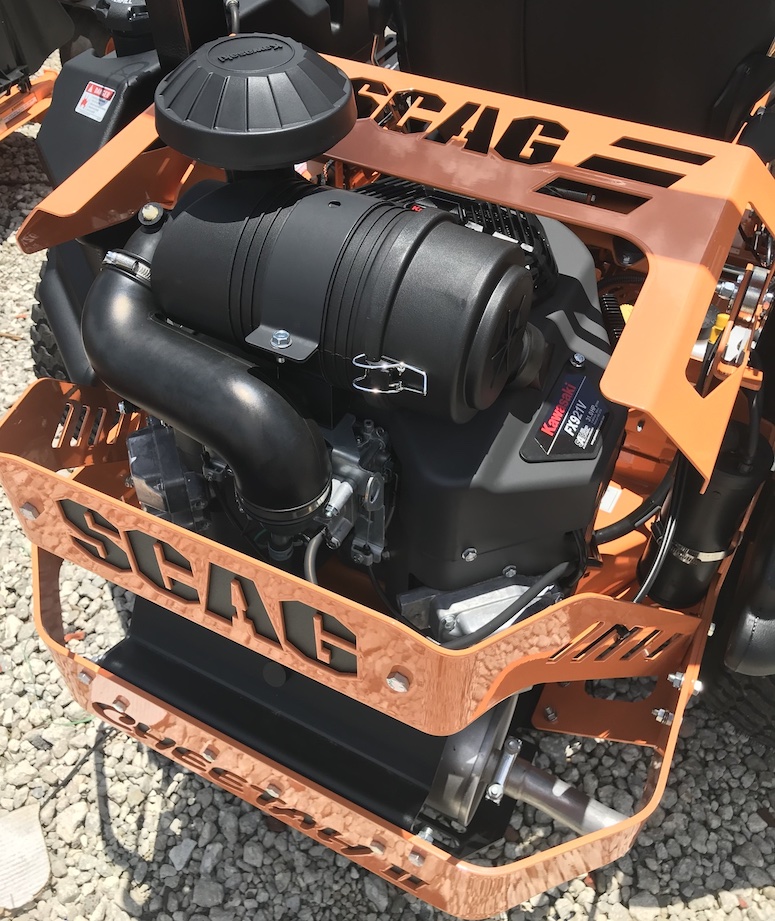
Addressing carburetor-related problems promptly can help restore proper engine function and get your Scag Lawn Mower back in working order.
How to Test the Safety Switch
To test a Scag Lawn Mower’s safety switch, follow these step-by-step instructions:
- Locate the Safety Switches: Scag Lawn Mowers typically have multiple safety switches, including the seat safety switch, blade engagement safety switch, and parking brake safety switch. Refer to your mower’s user manual to identify the location of these switches.
- Inspect the Seat Safety Switch: The seat safety switch is usually located underneath the seat. This switch prevents the engine from starting if no one is sitting on the seat. To test it, sit on the seat and engage the parking brake. Then, try to start the engine. If the engine starts, the seat safety switch is working correctly.
- Check the Blade Engagement Safety Switch: The blade engagement safety switch is usually located near the blade engagement lever or the deck engagement area. This switch prevents the engine from starting if the blades are engaged or if the deck is in an improper position. To test it, ensure the blades are disengaged and the deck is in the correct position. Then, try to start the engine. If the engine starts, the blade engagement safety switch is working correctly.
- Test the Parking Brake Safety Switch: The parking brake safety switch is often located near the parking brake lever or pedal. This switch prevents the engine from starting if the parking brake is not engaged. To test it, engage the parking brake and try to start the engine. If the engine starts, the parking brake safety switch is working correctly.
- Listen for Clicking Sounds: When you engage or disengage each safety switch, listen for a clicking sound. This indicates that the switch is functioning and making contact as it should.
- Check Wiring and Connections: Inspect the wiring and connections associated with each safety switch. Ensure that the wires are not damaged, disconnected, or corroded.
- Replace Faulty Safety Switches: If any of the safety switches fail the test or are not functioning correctly, they may need to be replaced. Contact an authorized Scag service center or a qualified technician to replace the faulty safety switches.
- Perform Regular Maintenance: Regularly inspect and clean the safety switches and their surrounding areas. Keep the switches free from debris, grass clippings, and other obstructions to ensure proper operation.
Testing the safety switches on your Scag Lawn Mower is crucial for the safe operation of the equipment. If any safety switch is not working correctly, it may prevent the engine from starting or cause unexpected shutdowns, helping to protect you and others from potential accidents or injuries. Always follow safety guidelines and consult the user manual for your specific model for detailed instructions on safety switch testing and maintenance.
How to Check the Engine Oil Level
To check the engine oil level on your Scag Lawn Mower when it won’t start, follow these step-by-step instructions:
- Locate the Engine Oil Dipstick: The engine oil dipstick is usually located on the side of the engine. It may have a yellow or red handle for easy identification. Refer to the mower’s user manual to locate the dipstick if you’re unsure.
- Clean the Dipstick: Wipe the dipstick clean with a rag or paper towel to remove any oil residue. This ensures you get an accurate reading.
- Insert the Dipstick: Fully insert the dipstick back into its tube until it rests securely on top of the threads.
- Check the Oil Level: Remove the dipstick again and observe the oil level indicator markings on the dipstick. It typically has two markings, “Full” and “Add” or a similar indicator. The oil level should be between these two marks.
- Interpret the Oil Level: If the oil level is close to the “Full” mark, the engine has sufficient oil. If it is near or below the “Add” mark, the oil level is low, and you need to add oil.
- Add Oil (if needed): If the oil level is low, add the recommended type and amount of oil to bring it up to the “Full” mark. Use a funnel to prevent spills and avoid overfilling. Refer to the mower’s manual for the correct oil type and capacity.
- Recheck the Oil Level: After adding oil, reinsert the dipstick and check the oil level again to ensure it is within the acceptable range.
- Address Oil Leaks (if applicable): If you find that the oil level is consistently low even after adding oil, it may indicate an oil leak. Inspect the engine and its components for any signs of leaks, and address any issues found.
- Seek Professional Help if Necessary: If you are unable to determine the oil level or if you suspect more significant engine issues, it’s best to seek assistance from a qualified technician or a Scag authorized service center.
Checking the engine oil level regularly is essential for maintaining the health and performance of your Scag Lawn Mower.
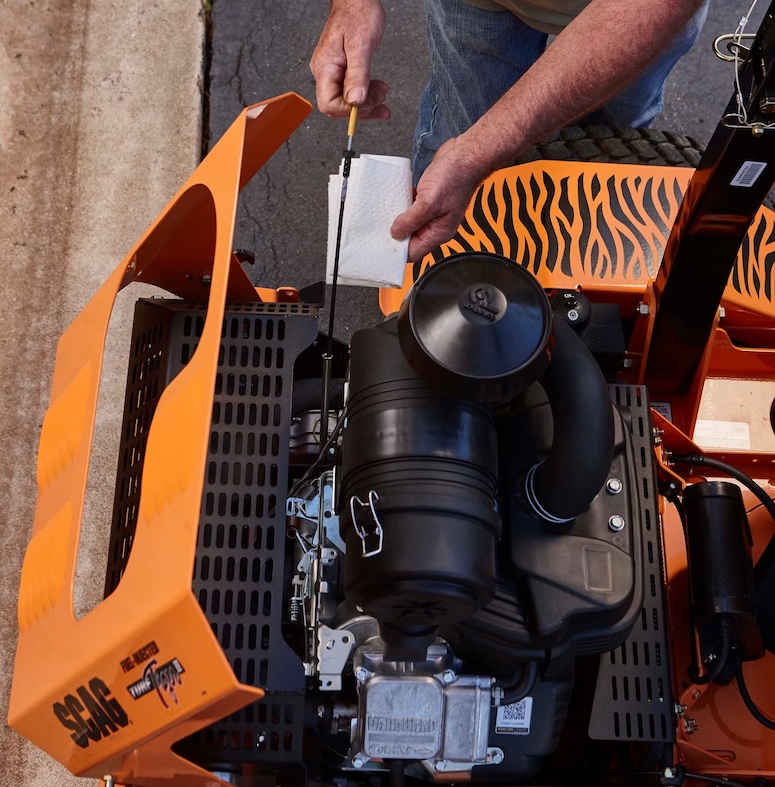
Proper oil levels ensure that the engine is adequately lubricated and protected, which can help extend its lifespan and prevent costly repairs.
Scag Lawn Mower Won’t Start FAQ
Frequently Asked Questions for Scag Lawn Mower Won’t Start
Q1. My Scag lawn mower won’t start. What could be the problem?
A: There could be various reasons why your Scag lawn mower won’t start, such as a dead battery, clogged fuel filter, faulty spark plug, or a problem with the ignition system. Refer to the troubleshooting steps in the service table for a systematic approach to diagnose and resolve the issue.
Q2. The engine cranks, but the mower won’t start. What should I check?
A: If the engine cranks but does not start, check the spark plug, fuel supply, and carburetor. Ensure the spark plug is clean and properly gapped, the fuel tank has sufficient fuel, and the carburetor is not clogged.
Q3. I have verified the battery and spark plug, but the mower still won’t start. What’s next?
A: If the battery and spark plug are fine, examine the fuel system components, including the fuel filter and carburetor. Clogged fuel filters or carburetor issues can prevent the mower from starting.
Q4. How often should I change the spark plug in my Scag lawn mower?
A: The spark plug in your Scag lawn mower should be replaced annually or after every 100 hours of operation, whichever comes first. Regular replacement ensures efficient ignition and proper engine performance.
Q5. Can a dirty air filter cause the lawn mower not to start?
A: Yes, a dirty air filter can restrict airflow to the engine, leading to an improper air-fuel mixture and difficulty starting the mower. Regularly check and clean or replace the air filter as needed.
Q6. Why is the engine hard to start after it has been sitting for a while?
A: If the engine is hard to start after sitting for an extended period, it could be due to stale fuel or a partially clogged carburetor. Drain the old fuel and refill the tank with fresh gasoline. Consider using a fuel stabilizer to prevent fuel deterioration.
Q7. How do I know if the safety switches are causing the starting problem?
A: To check the safety switches, follow the step-by-step instructions provided in the service table. If any safety switch is faulty or not functioning correctly, it can prevent the engine from starting. Test each switch to ensure proper operation.
Q8. Can an electrical problem cause the mower not to start?
A: Yes, electrical issues like a faulty ignition switch, solenoid, or wiring can prevent the mower from starting. Inspect the ignition system and wiring for any damage or loose connections.
Q9. When should I seek professional help for my non-starting Scag lawn mower?
A: If you have followed the troubleshooting steps and still cannot identify the issue, or if you are uncomfortable performing the diagnostic process, it is best to seek professional help from an authorized Scag service center or a qualified technician.
Q10. What is the recommended maintenance schedule for my Scag lawn mower to prevent starting issues?
A: Regular maintenance is crucial to prevent starting problems. Follow the maintenance schedule outlined in your mower’s user manual, including routine oil changes, air filter replacements, spark plug checks, and fuel system cleaning.
Remember, proper maintenance and timely troubleshooting can keep your Scag lawn mower running smoothly and efficiently, reducing the chances of starting issues and ensuring a longer lifespan for your equipment.
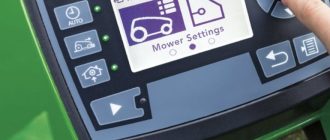
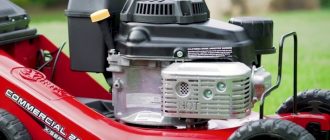
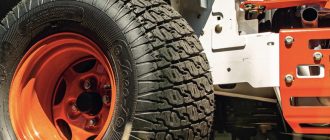


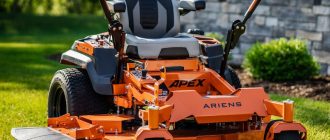
How do I know if my Scag lawn lower battery is the problem?
Check the battery voltage using a multimeter. If the battery voltage is below the recommended level (usually around 12.6 volts for a 12-volt battery), recharge or replace the battery if necessary.
Is it safe to jump-start my Scag lawn mower with a car battery?
Jump-starting a lawn mower with a car battery is not recommended as it may cause damage to the mower’s electrical system. Use a proper mower jump-starter or charge the battery separately.
Can a clogged air filter prevent the mower from starting?
Yes, a clogged air filter can restrict airflow to the engine, causing starting issues. Inspect the air filter and clean or replace it if it’s dirty or damaged.
Hi. My New Scag Liberty Z lawn mower won’t start. What could be the most common causes?
There are several potential reasons for this issue, such as a dead battery, clogged fuel filter, dirty spark plug, faulty ignition system, or malfunctioning safety switches.